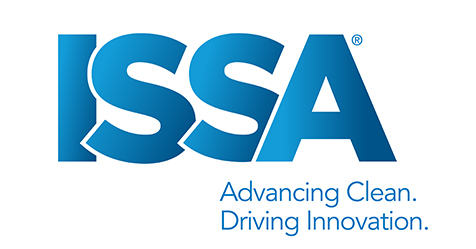Maintaining a well-trained, capable staff is a crucial part of providing consistent, high-quality commercial cleaning services—yet many organizations struggle to keep employees on board.
In fact, cleaning operation managers list turnover reduction as one of their top three challenges, according to a recent survey from Procter & Gamble Professional.
“Turnover is systematically high within all service industries, commercial cleaning in particular,” says Jim Peduto, managing partner at cleaning industry consultancy the American Institute for Cleaning Services (AICS). “If you look at surveys of what’s important to people in the cleaning industry, turnover is always in the top five.”
When you factor in paperwork, productivity, temp or new hire training, and other costs, losing employees can be an expensive setback, particularly if it’s happening repeatedly.
Cleaning industry consultant Sharon Cowan, CBSE, chairman and president of Cleaning Business Consulting Group, says labor is the No. 1 cost for most contractors, and high turnover can really have an impact. “If a company has to train new people, it can really drive labor costs up—and the ROI when those employees leave quickly is zero.”
To prevent employees from walking out the door, you need to know what factors may indicate they’re becoming dissatisfied, what amenities you need to offer them, and how to create an environment that will encourage workers to stay.
Warning Signs
Workers who are thinking of quitting don’t always offer ample warning.
“Rarely is someone in the cleaning industry going to tell you, ‘Hey, I’m thinking of leaving,’” Peduto says. “People don’t do that when they leave.”
But, the signs are often fairly obvious, if supervisors are paying attention.
Customer complaints and a failure to show enthusiasm for training programs can indicate an employee is checking out, according to Brian Mamo, director of business development at Michigan-based janitorial service and building maintenance company Stathakis, Inc.
Punctuality—or missing shifts altogether—can be another sign, according to says Chuck Violand, president and founder of cleaning industry consultancy Violand Management. “If you’re struggling to get people to show up on time, and they’re exiting as quickly as they can, generally, that individual is disengaged,” he says.
Stopping Turnover in its Tracks
In addition to site visits, commercial cleaning service providers can employ a number of other engagement strategies to retain valued employees—such as:
- Checking in with teams. To help prevent an employee mass exodus, Peduto says, supervisors need to seek cleaners out, either through a pre-shift group meeting or individually while they’re on the clock. “For a lot of people working alone,” he says, “if the only time they see their supervisor is when there’s a problem, that’s not a prescription for a happy workplace.” Frequent contact can mean the difference between noticing someone is unhappy—and getting that employee’s resignation. Stathakis supervisors visit each work site at least once each week. Supervisors at commercial cleaning service provider KleenMark, which operates in Michigan, Illinois, and Wisconsin, often check in with employees daily.
- Investing in employee education and training. KleenMark’s KleenMark University, for example, which launched in 2005, provides ongoing training for employees and customers. “No matter what your title or position is, everyone wants to learn and grow,” says KleenMark’s Vice President of Sales and Marketing Susan Enlow. “If you give people an opportunity to develop themselves, they appreciate it. They’re more engaged with their job and know the company values them.”
- Offering recognition-based rewards. KleenMark offers recognition programs based on supervisor and customer feedback, including regional cleaner of the month awards, which involve a cash incentive, and a regional cleaner of the year award that includes a weekend hotel stay. Stathakis gives employees a gift card and shout-out in the company newsletter when clients feel they are doing a great job.
- Saying thank you with a celebration. Appreciation events can have a big impact. “Some clients do holiday parties or summer picnics where they provide all the food and employees can bring their families,” Cowan says. “It goes back to a sense of team effort and camaraderie, and feeling part of the organization.”
- Diversifying tasks to prevent burnout. If you can’t offer a wider variety of positions, consider breaking employees’ routines. “Some people need a little bit of diversity in what they do,” Mamo says. “If we have a large building, we try to do some cross-training; if a person typically cleans restrooms or is in charge of vacuuming, we change it up.”
- Emphasizing the value of the work. Stathakis, which works on a number of hospital and ambulatory sites, tries to stress the purpose behind cleaners’ work. “We tell them, ‘Somebody can look at this as mopping a floor and cleaning toilets, but what you’re doing is important because you’re stopping the spread of disease and germs, and what you do affects anyone who is sick and all employees in this building,’” Mamo says.
The company’s emphasis on work value is one reason Mamo says its roughly 70 percent turnover rate is far below the industry average, which he estimates is around 200 percent. “If you just hire somebody and don’t tell them much about the company, to them, their job is meaningless,” he says.
- Garnering employee feedback. You have to know how your staff feels to know what to change—one reason Cowan recommends distributing an employee survey on a regular basis. “It should be approached as, ‘What can we do to make your life easier?’” she says. “How can we help you do what you do better—more training? Different equipment?”
KleenMark sends its surveys out through an employee engagement app called TINYpulse so workers can easily access them on a phone or other email-enabled device. Violand Management also uses employee surveys to gauge employee sentiment. “We do it all the time [with employees working for client companies] if we sense they’re having issues with people or infrastructure,” Violand says. “It tells you what the real story is, in spite of how you try to rationalize it with your mind.”
Finding the Right Fit
You can also try another turnover reduction technique: Avoid hiring employees who aren’t a good fit and may be more likely to leave.
Cowan recommends creating a profile for your ideal worker, then using it to screen candidates. “When you go outside that profile, that’s when you often have trouble with hires,” she says.
Workers who also don’t have consistent transportation to get to work, for example, or have traditionally only stayed at jobs for a few months can prove problematic, Cowan says.
Your employment needs and the candidate’s should align. For example, if you’re looking for a cleaning professional to work part-time at night, someone looking for full-time work may not last long in the position. “The best profile that works in that arena is an applicant with a full-time day job who wants to supplement his income with additional work,” she says. “You can track his employment history, and he may be happy with 20 to 30 hours a week.”
To attract and retain quality workers, paying at least the average rate—a US$12.24 hourly rate or an average annual salary of $25,460 for commercial janitors and building cleaners, according to U.S. Department of Labor data—is important.
But money isn’t the sole factor that determines employee satisfaction. “Money is definitely part of the equation, but money alone won’t keep people,” Enlow says. “They need to feel valued and like they’re making a difference. They need to feel their company is investing in the future.”
Failing to regularly communicate with employees, or provide any encouragement, can be intrinsically damaging.
“Over and over, we see those issues leading to the downfall of organizations,” Violand says. “It’s not customer satisfaction, quality, or market competitors; it’s the internal [issues] people don’t want to address.”
Creating a positive working environment, on the other hand, can have a huge effect on both employee satisfaction and retention.
“In a service industry, your turnover rate probably won’t ever be zero; it just needs to be better than your competitors,” Peduto says. “If yours is half of your competitors’, you have a whole bunch of cost advantages—and you can typically provide better quality.”
Why Employees Leave
Although reasons can vary per company, several factors often influence retention issues. Read about about these factors below and hear from industry experts on why your employees may be jumping ship.
- Unclear expectations: “Any employee grows exhausted when their manager is constantly changing the game,” says Violand Management President Chuck Violand.
- Mishandled management: “Cleaning employees are lone doves,” says Cleaning Business Consulting Group President Sharon Cowan, CBSE. “Their interaction with the company is often limited, so they can feel disconnected.”
- An unsupportive environment: “Most employees don’t receive any feedback, unless something went poorly,” says American Institute for Cleaning Services Managing Partner Jim Peduto.
- Insufficient resources: Lacking supplies, equipment, and training can be exasperating. “No one wants to work in an environment where they don’t have the correct tools,” Peduto says.
- Increased job opportunities: Janitor/building cleaner employment is projected to grow 12 percent through 2022, according to the Bureau of Labor Statistics. Employees may feel they have more possibilities and don’t have to stay put.




